AWS Lightsail
IntroductionIn this article, we would be discussing AWS Lightsail. AWS or Amazon Lightsail is a new kind of VPS (Virtual Private Service). It was made on the concept of easing up some businesses. Consider an instance where you might know that every business runs behind an idea and that idea grows exponentially if it is driven smoothly. The factors that might be affecting businesses these days have a lot to do with technology. The quicker the technology, the more is the business and more profit. The quicker the implementation of the idea of business with technology, the more successful the business may become with time. To ease up such business-oriented services in the world, we need to look at the resources that the current market has been using for a while. It might also be the case where this resource can cover more business with less expense so that profit can be marginally increased. This is where AWS comes in. It is the leader in the world of cloud computing and the driver of most businesses today. Specifically, let's learn more about AWS Lightsail, which is another tycoon in the cloud computing market these days. This would cost him quite more than what he would earn from the blog. This is where AWS Lightsail comes to the rescue. It needs no database, no physical access to the server, and no scaling when the traffic occurs. Before exploring AWS Lightsail, we need to understand more about Virtual Private Server. What is VPS?Virtual Private Server or VPS is a representation of a software server that lets users access to computable resources for a piece of job or a task while remaining abstracted or hidden from the physical server layer. Each VPS is powered to be independently functional of a physical layer and lets its users set up Lightsail because it is usually not visible through AWS management console without a virtual private server. There are generally two types of virtual private servers namely: Managed VPS: It allows its clients to worry much about "what" rather than "how" of managing the resources required in a full-scaled front-end application. This VPS can come along with AWS to manage the abstract laying infrastructure needed for a job or set of tasks a user wants to execute on VPS. Unmanaged VPS: This allows the VPS to carry out a simple hosting experience where the client is responsible for managing all the tasks like configuring it, installing and updating the software. What is AWS Lightsail?AWS Lightsail is a Virtual Private Server or so-called VPS popularly that offers various templates to choose to range from a plain OS to a power-packed application and implement it using only a click of the button. So, there is no need of worrying about the underlying infrastructure. Just launch the application, and start building your idea, it's that simple! Why AWS Lightsail?We might have dozens of companies providing great cloud services but why opt for AWS Lightsail? Consider an instance to understand why. Suppose, a person is planning to start a business and have a great idea but is not equipped well with the resources which might not result in him earning profits at the cost of what he expects. He/she might be starting a blogging business, but has no idea what resource he may need for this business venture. He starts his blog by storing the data in the MySQL database that need scaling and configuration. Later, it has to be implemented on the web server which might cost the poor blogger a fortune initially. Users and ServiceConsider the blogger example that we discussed earlier. We may adopt a WordPress configured system and for that, we can make use of the WordPress logo from the Create Instance dashboard. Then we can select the hosting service with the desired plan and we are all set to move ahead. Moreover, with the AWS Lightsail, the general tasks like installation, configuration, and scaling from the technical side can be automatically served and there's no need for auto-scaling because the system does it right away. The next instance that is taken care of by AWS Lightsail whenever we click on the Create Instance button, the following actions takes place:
Features of AWS LightsailTo understand what separates AWS Lightsail from all other Automatic Services like Lambda, OpsWorks and Beanstalk consider the below points that justify the same: Auto-scaling: It is limited to Lightsail because a user can't increase capacity. Other services like Beanstalk and Lambda can be easily scaled. The only way to auto-scale Lightsail is by changing the existing plan and the resources and features will automatically be adjusted once billed. Fixed Cost: AWS Lightsail the price is fixed no matter a user uses its features for a short span or long unlike other services where the user pays according to the usage of resources. Configuration: In other services like Opworks and Lambda, the user holds the complete configuration control. He can create stacks and gradually configure layers. This is not the case with Lightsail. Lightsail is not a complicated system like others rather it is a simple system that offers nothing to configure. Unlike Beanstalk where the user can have control of the codes he's uploading for the application or carrying out the deployment, Lightsail has nothing just self-involving mechanisms to customize or control. It rather works abstractly under the OS and carries out all such tasks for you. It also automatically takes control of the background tasks and the user just has to push certain buttons for execution. So, in a way, Ligthtsail is different from all other cloud service providers. Let's now analyze and embrace the difference in terms of capital it costs to its users. Consider the below image which shows an approx estimation of cost per service offered by Lightsail. For Windows: 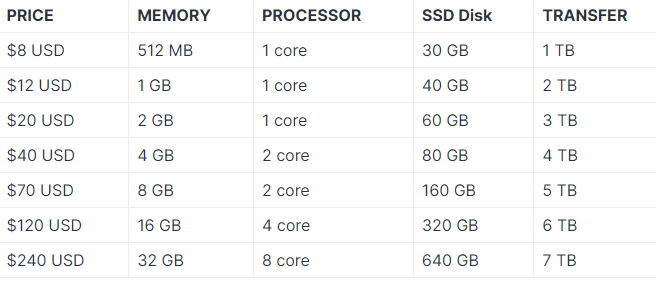
For Linux: 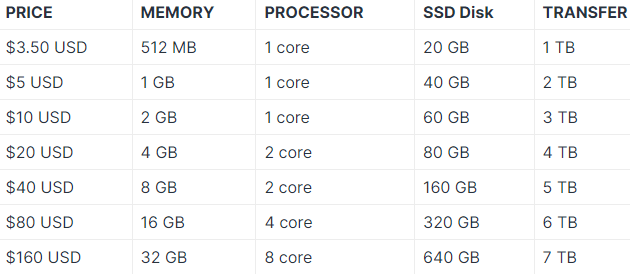
Benefits of AWS LightsailSome of the core benefits of Lightsail are enlisted below: Simple UI: Lightsail runs under the hood of pre-installed software. The UI offers less confusion for the user who is using it for the very first time. Adaptability: Organizations or developers find Lightsail very alluring because its mainframe and backend are much less difficult to handle, unlike others where the user needs to self-configure the assets. Affordability: Lightsail perhaps offers the cheapest subscription is $5 for a month and also free for the first month. Environment: Since AWS powers all the hardcore assets of Lightsail, it is massively supported to all kinds of applications. Reliability: There exists a very rare case of replacement when one is running its services powered by Lightsail and this is the main reason why is considered highly dependable. Launching Lightsail Let's now proceed by creating our very own Lightsail instance channeling through a simple WordPress configured site. Consider the below steps that will help us to understand how to create or launch a Lightsail instance. 1. Log in to the Amazon Management Console, find and select Amazon Lightsail. 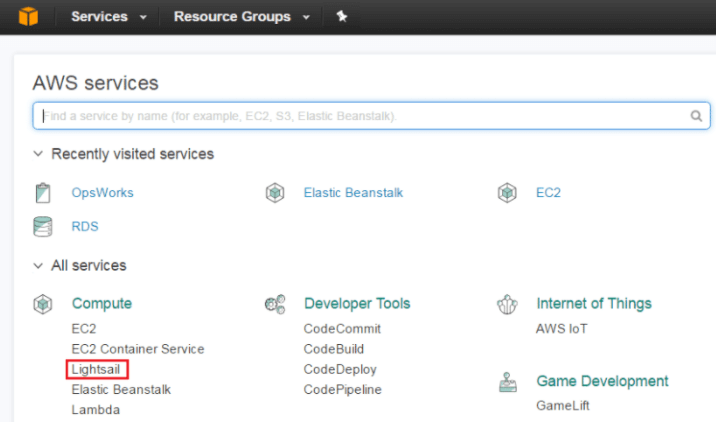
1. Click on the Create Instance button. 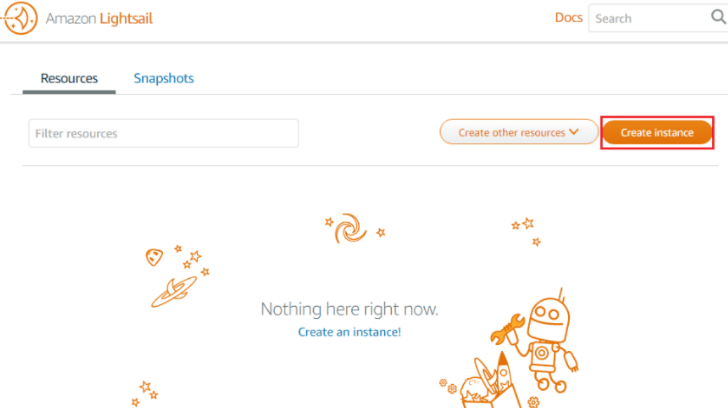
2. We have certain choices to select from the list shown in the image below but since we are working with WordPress, we will select it. 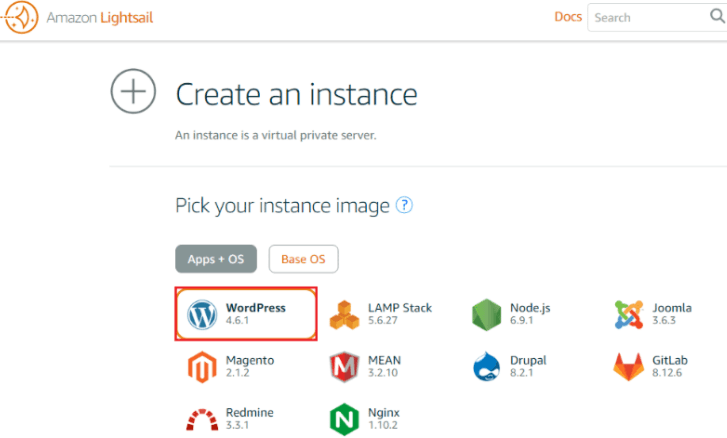
3. We will now consider various options out of which first option is selected because it offers free tier subscription for free for a month. 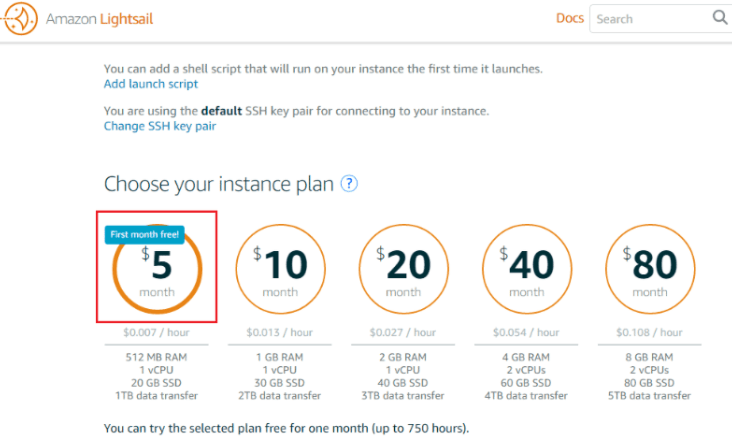
4. Virginia Zone is automatically selected since it is the only option available as of now. 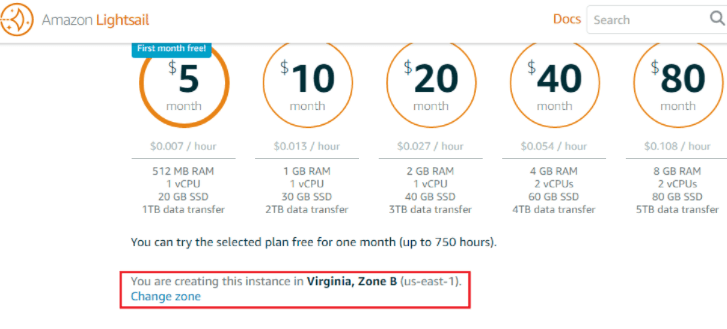
5. We can now easily rename our instance and then click on Create. 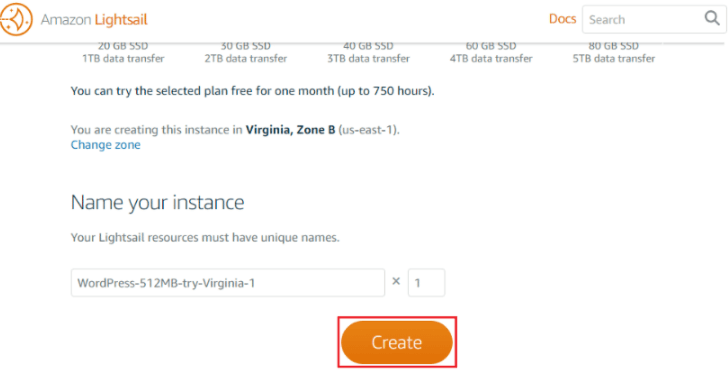
6. It might take some time to create the instance and the following window would appear. 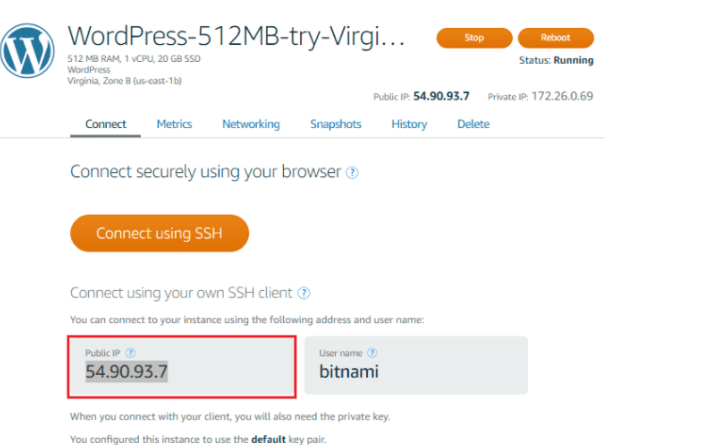
7. This window will mark the successful creation of our instance. 
SummaryIn this article, we came across various aspects of AWD Lightsail and discovered it from the roots. We also learned about VPS which is nothing but the remote services offered by Amazon to empower Lightsail. Later, we learned about what are the different types of VPS are currently being used upon the requirement and understood their case study. It is quite important to note that all of the facts that we just discussed are relevant to the term "Cloud". A cloud is nothing but a virtual server that offers different types of services and is remotely present in some parts or zones where it can be accessed. It is important to understand that AWS Lightsail is not automatically scalable like we discussed for Beanstalk or Lambda. It is an automated service provided by Amazon to create instances for pre-installed software to particularly fix the resource needed in an instance so that businesses can be scaled and managed. Lightsail not only powers domains like WordPress but it can also be easily implemented using Node.js, LAMP, similar to the tools where data migration can be carried to the cloud. Later in the article, we understood why exactly is Lightsail put into use and what are its benefits. Since there are no such technical configurations required to manually overrate its functionalities, it allows its users to easily sail into the instance and thus the name Lightsail.
Next TopicAmazon SES
|
 For Videos Join Our Youtube Channel: Join Now
For Videos Join Our Youtube Channel: Join Now
Feedback
- Send your Feedback to [email protected]
Help Others, Please Share










